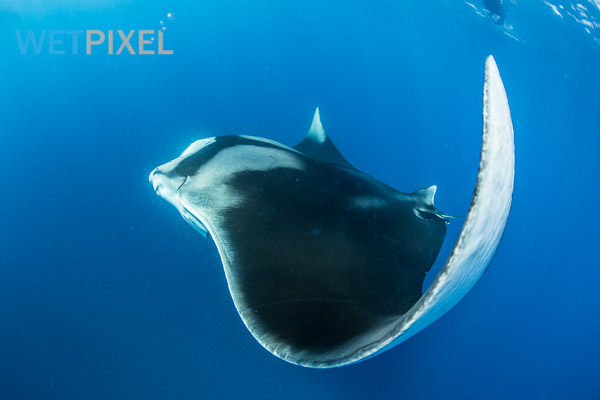Manta ray images required for science

The Marine Megafauna Foundation is asking citizen scientists and photographers to submit their images of reef manta rays (Manta alfredi) to its Manta Matcher database. This is in an effort to support additional protection for the species by getting them included onto the Conservation for Migratory Species listing.
Press release
The new study in Plos One, which is the first of its kind to use “Manta Matcher”, the world’s first, open access, global online database for manta rays, demonstrates the effectiveness of citizen science fuelled research, opening the door for similar studies on migratory species.
WildMe, a not-for-profit organization in the USA, created Manta Matcher and other online Wildbooks. These online databases are helping to propel scientific research to a new level by encouraging public participation and integrating novel pattern matching algorithms that allow researchers to automatically scan photo entries for global matches (think FBI fingerprint database!).
Dr. Andrea Marshall, CEO of the Marine Megafauna Foundation and the principal scientist for their global manta ray program, maintains that “collective strategies, which aim to tackle large-scale questions, are not only more efficient but are gaining in popularity. There is a growing momentum for shared research efforts, open sourced resources and projects with global scope. By opening traditionally specialist fields, making them more accessible and appealing to the public, these initiatives stand not only to educate a broad audience but they also have the added benefit of harnessing near-unlimited volunteer manpower”.
At its core, the intention of ‘citizen science’ is to bridge the gap between field researchers needing data and an enthusiastic army of citizens with the capacity to deliver information. “Manta Matcher stands to revolutionize manta ray research by both centralizing data and tapping into a much broader base of contributors, namely the SCUBA diving community around the world. Citizens can now pick up a camera and contribute to a global scientific effort.
Still in its infancy, Manta Matcher is already helping biologists store, organize and utilize their manta ray data. It is also helping to facilitate much needed international collaborations between researchers, as evidenced by this recent publication. The ultimate goal of this initiative is to track global trends, bolster ecological knowledge of manta rays and gain a broader perspective of the species immediate conservation needs.
The brains behind “Manta Matcher”, Dr. Marshall is delighted at the recent momentum of this initiative. “Manta Matcher has shown me that “citizen science” programs can unite communities all around the world that share a common passion. It has also revealed how much more we can achieve when we break down traditional barriers and invite people from all walks of life to participate in studies of our natural world. As a collective, we can now undertake collaborative wildlife studies which will lead to hard hitting global conservation solutions”.
This study represents the first regional study of the movement patterns of reef mantas in Indonesia. Despite the creation of several designated manta ray sanctuaries in the country and a national wide ban on fishing, reef manta rays are still under threat in the country. The authors hope that this manuscript will provide the impetus for more comprehensive management of manta populations in Indonesia, while also providing much needed data to policy makers globally. The reef manta ray is being nominated for CMS listing in early November 2014. “The publication of this study is very timely, offering some of the first substantial peer-reviewed data on their rapid and long-distance migratory abilities, one of the pre-requisites for listing on this convention”, Andrea says.
Officially, scientific authorities within the Marine Megafauna Foundation support the inclusion of the reef manta ray (Manta alfredi) to both appendix I & II of CMS as a precautionary measure aiding the global conservation of this threatened species. A CMS listing will offer a much-needed platform for the management of local and regional populations of this species.
Manta alfredi is currently listed as a species vulnerable to extinction on the IUCN red list of endangered species and has been listed on CITES appendix II to help counteract mounting unsustainable international trade fisheries for manta rays. This ray species is both capable of long-range international migrations and regularly undertakes substantial temporal or seasonal migrations (of hundreds of kilometres) from areas of protection or reduced threat to unprotected areas or offshore environments, often travelling through areas fraught with anthropogenic threats.
The conservative life history attributes of Manta alfredi, combined with their relatively small and fragmented populations throughout their global distribution and the growing threats against them provide substantial grounds for their listing on CMS as a precautionary means to protect remaining populations. A CMS listing would encourage the global conservation of Manta alfredi, support much needed local and regional management strategies and help to discourage targeted fisheries for this species and their continued domestic use in some member nations.